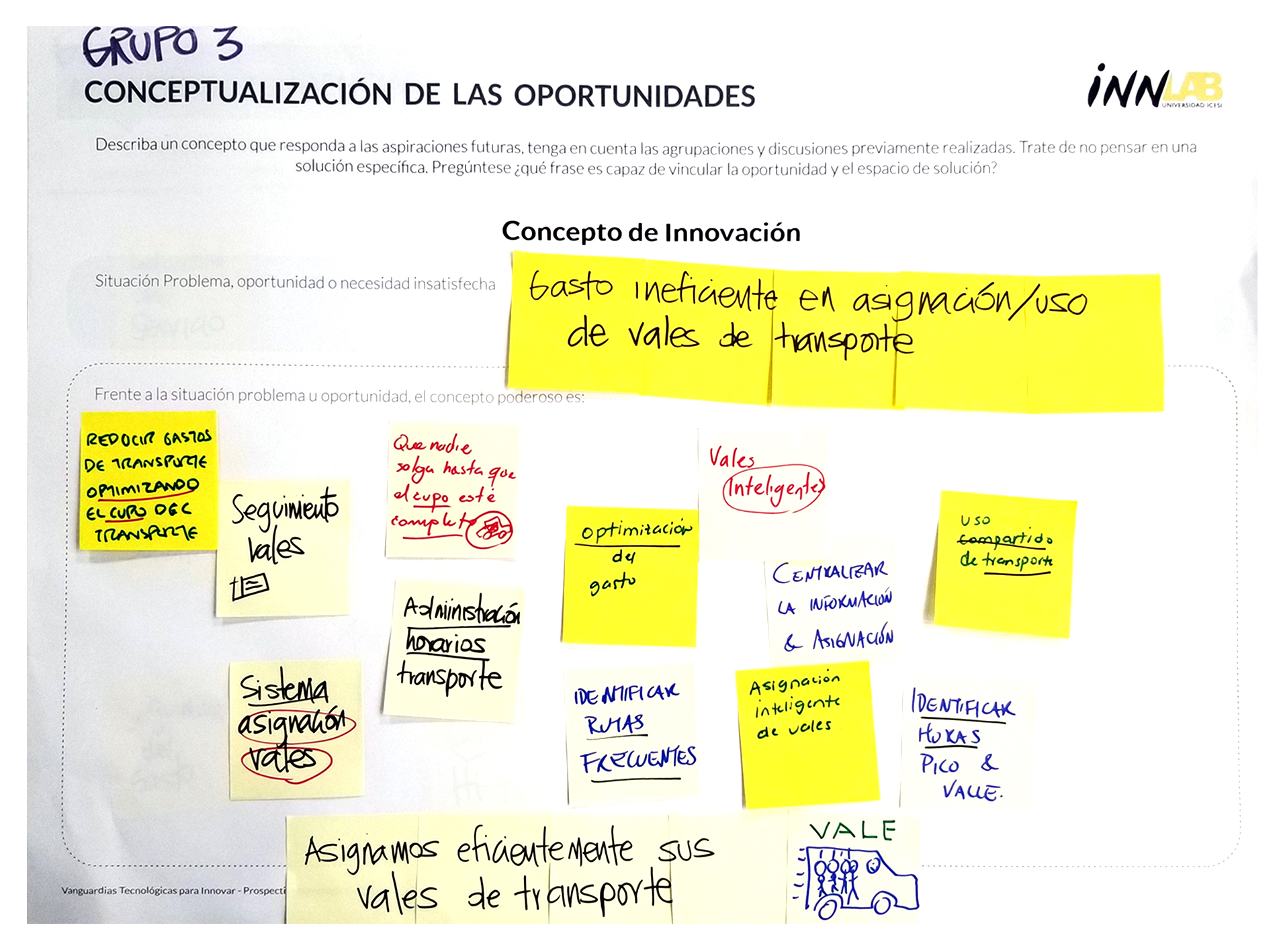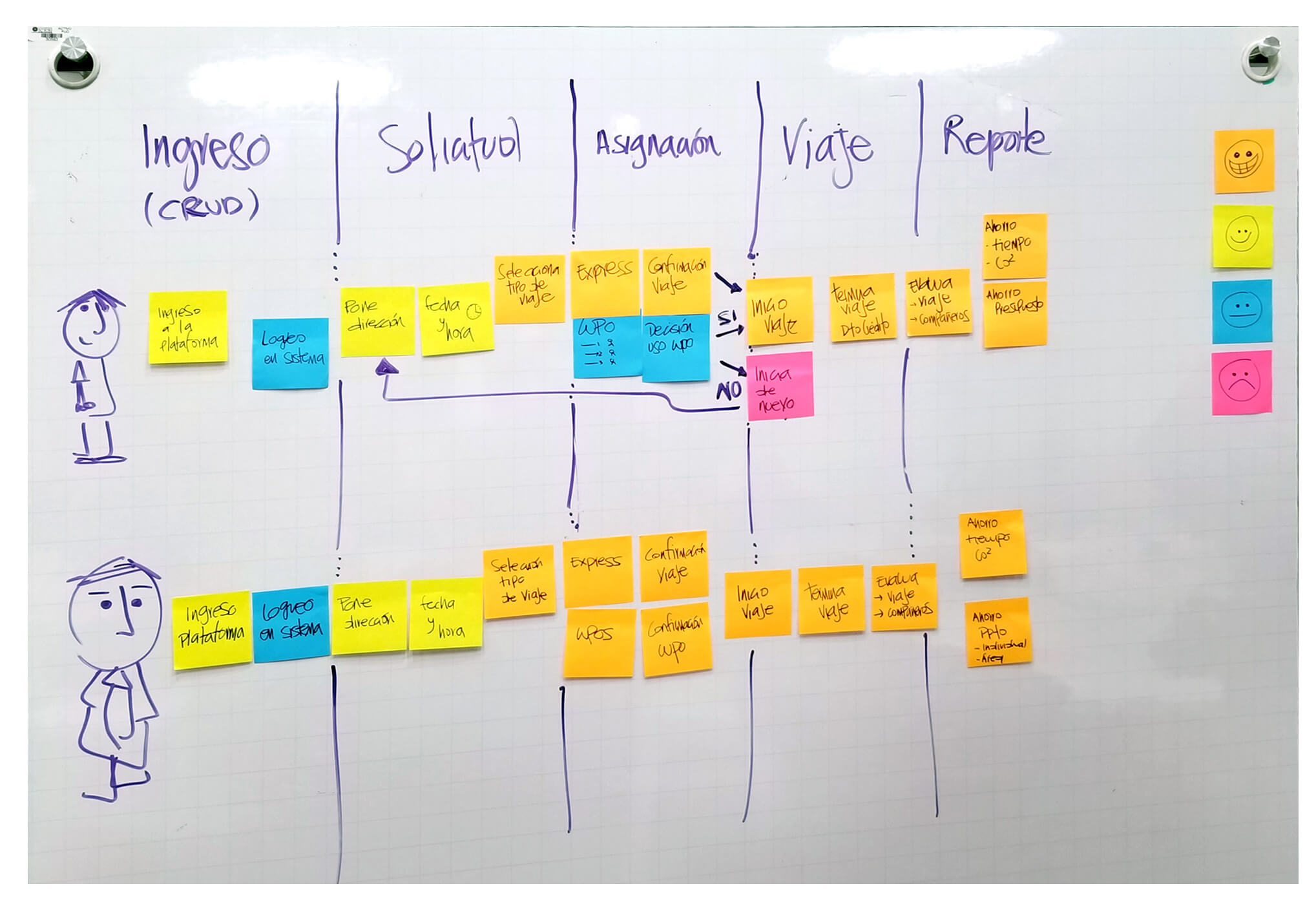The background
To start, why?
Efival is an academic project carried out in the Multimedia Applications Masters Degree. The scope is intended to make the ideation process, UX/UI design, brand design, prototype development, and an application with an actual client for user testing. The company with which the validation and development process was done is Coomeva Servicios Administrativos (CSA).
CSA is a company with 1,250 employees that work as a shared services center for the other companies of the Coomeva Group. This company currently spends 7 million Colombian pesos per month on payment of taxi vouchers. The 15 companies of the Business Group experience this exact situation, and this concept represents a very high economic value with which they do not want to continue.
The challenge
Understanding business needs
CSA wants to reduce the expenditure of money on transportation, improve transportation times, and be able to track the cost of the budget assigned to each area.
Regarding social responsibility, it seeks to reduce the time its employees spend on travel, encouraging the use of shared transport, contributing to city mobility, and reducing CO2 emissions.
Finally, they hope this can be the pilot of a service they could add to their portfolio and offer as their service for the rest of the Group’s companies, using the current infrastructure and considering the limitations of mobile data of their employees.
The research
Gathering insights from users
Our research begins by documenting the current status of taxi voucher service usage and gathering information from users and entities involved in this service delivery.
We started by creating a matrix that allowed us to cross the stakeholders involved with the available sources of information to clarify the current problem.

After obtaining the information about the service inside the company, we decided to make a context analysis and look for tendencies from the sector and possible solutions created by similar businesses.





To understand the relationships between all the entities involved in the service, we started to search for users and the most common usage scenarios within the company, grouping them by main characteristics and significant shortcomings. Ultimately, we could detect the three most representative people and the ideal use scenario for each of them.

Having our users set, we started a UCD process using the ladder technique concept to define from all these user requirements what were the real needs of the company and the expectations of the people who would use the service.

At this point, we had a first approach to the service scheme. We defined the basic functionalities it should provide: to generate savings, have service metrics, and facilitate shared transport between collaborators.


The approach
Designing experiences

Having the initial concept of the service we wanted, we began to define the characteristics of the persons who would use it and the value proposition for each of them.
We did observation exercises, surveys, and interviews with employees to detect what they hear, what they think, what they see, and what the company says about the problem.


We looked for each user’s main pains and yearnings with the Jobs To Be Done technique.

With all this information, we started detecting unsatisfied needs.

Building empathy
With the main pains of the users and the motivators, we generated a service proposal according to the business and the company’s needs.


The discover
Findings from interviews and surveys
We detected an indiscriminate expense in the number of transport vouchers, and until that moment, they had not defined clear ceilings or a budget management policy.
In many cases where people needed to travel, the head of the area in charge of signing the voucher was not there, which generated discomfort and wasted time.
Each area had between 1 or 2 people in charge of making this process manual: on paper, they wrote down who was given the vouchers, while the reports and accounting were generated and kept in Excel books. This activity took an average of 15 hours a week.
We found frequent routes and schedules, which made it possible in the future to think of predefined ways in those time lapses.
Some positions required urgent trips that could not be planned and did not meet a monthly request pattern.
The concept
Crafting experiences
Efival is a web platform with which the company can manage transport vouchers in an agile and efficient way, improving the service for their collaborators, generating savings, and contributing to reducing environmental pollution indexes by CO2.
The design
Paper first






User-centered design




We defined the phases through which each user profile must pass and evaluated their moods based on an exercise with a prototype service on paper.


Efival prototype
The branding



The delivery
Visual design

Boom !!!

The results
Major learnings
It was complex to get people with different managerial and operative positions to ride in the exact vehicle; there were cultural clashes and cases where it was impossible to force managers to share their transport.
Some users raised the idea of creating Efival same service for those with children in schools with a school route.
Due to Wi-Fi limitations in the company’s facilities and not everyone having mobile data, it was necessary to have a person in charge of managing the platform to receive and assign the transport vouchers requested by the employees.
A work plan was submitted to the company for implementation, specifying its phases and the activities needed to achieve it.

This project was developed in 8 weeks.
The team
Carlos Narváez – Mechanical Engineer
Vanessa Alis Orozco – Service Design
Marcela Franco – Economist
David Portilla Saldana – Frontend / UX
Elena Rodriguez – Business Administrator
Special thanks to José Andrés Moncada and Maria Clara Betancourt for advising us on this process.

